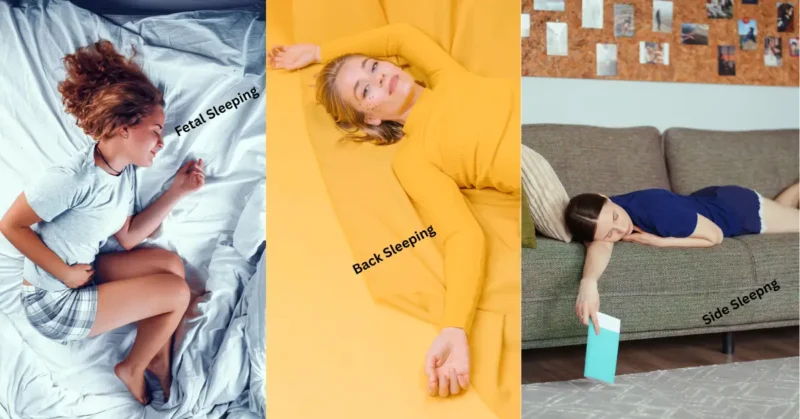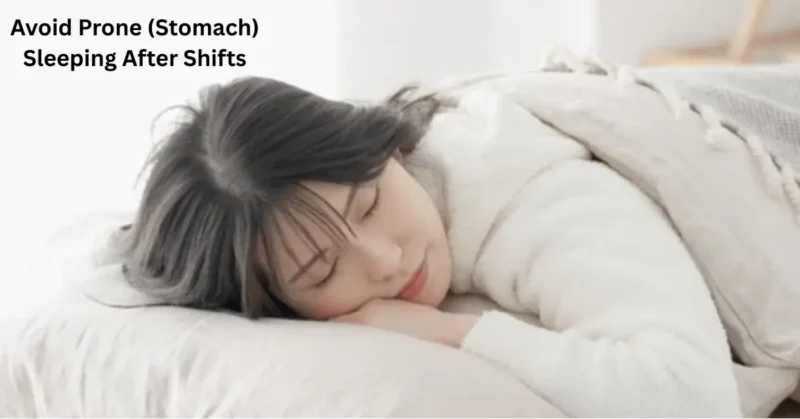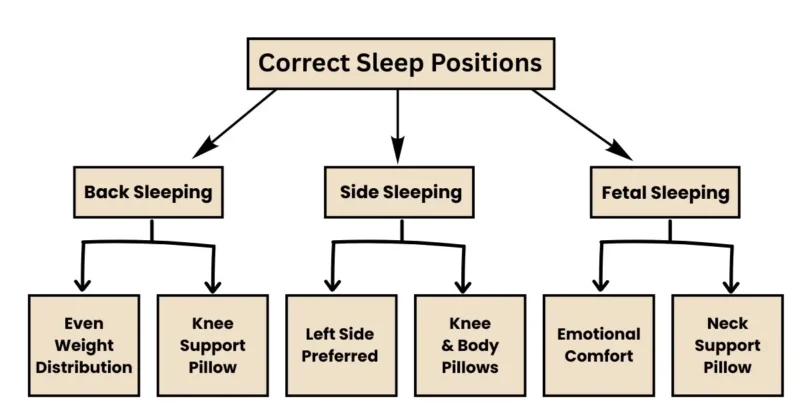Struggling to rest after long shifts? Learn the best sleeping positions that relieve fatigue, improve spine alignment, and help your body recover faster, even after night work.
Thank you for reading this post, don't forget to subscribe!Working shifts can seriously impair our physical and emotional well-being and throw off our circadian cycle. To counteract this, the way we sleep matters just as much as when we sleep. Choosing the right sleeping position after a long night or day shift can dramatically improve rest quality, reduce fatigue, and promote recovery. Here’s how to position your body for optimal rest and recovery.
Why Sleep Position Matters After a Long Shift
Extended shifts—especially night shifts—can strain muscles, disrupt hormone cycles, and impact brain function. Poor sleeping posture can worsen these effects, leading to chronic pain, fragmented sleep, and long-term sleep deprivation. The right sleep posture promotes spinal alignment, muscle relaxation, and faster entry into deep, restorative sleep stages.
Back Sleeping: The Gold Standard for Alignment
Sleeping on the back with a pillow under the knees is one of the most beneficial postures for recovery. It evenly distributes weight and maintains the natural curve of the spine.
How to Optimize It:
- Make sure your head and spine are in alignment by using a supportive pillow and a medium-firm mattress.
- To relieve strain on the lower back, use a soft pillow or rolled towel beneath the knees.
- Avoid elevating the head too much to prevent neck strain.
Back sleeping improves breathing, reduces acid reflux (when using slight head elevation), and minimizes joint compression. It’s especially ideal for shift workers experiencing lumbar tightness or shoulder pain.

Side Sleeping: Reduce Pressure, Boost Circulation
The lateral sleeping position is the most common and often the most comfortable for workers who experience muscle stiffness or inflammation.
Best Practices:
- Favor the left side to enhance circulation and reduce pressure on the heart.
- Place a pillow between your knees to maintain hip alignment and reduce spinal torsion.
- Hug a soft body pillow to ease shoulder tension and support the upper body.
Side sleeping is particularly effective for those dealing with snoring, sleep apnea, or gastrointestinal issues. It also allows better drainage of the lymphatic system, which is essential for overnight detoxification.
Fetal Position: Comfort for the Exhausted
Curling into the fetal position with knees tucked and chin slightly down can provide a deep sense of safety and comfort, especially after emotionally draining shifts.
To Avoid Numbness:
- Loosen the curl to avoid compressing the diaphragm.
- Use a memory foam or contour pillow to support the neck.
- Stretch gently before sleeping to relax tight hip or back muscles.
While not ideal for spinal alignment, the fetal position helps some people fall asleep faster and may be useful when emotional exhaustion outweighs physical stress.
Avoid Prone (Stomach) Sleeping After Shifts

Although it may feel comforting, sleeping on the stomach puts severe stress on the cervical spine and restricts diaphragmatic breathing. For shift workers already under physiological strain, prone sleeping can worsen neck and back pain and lead to fragmented sleep.
If it’s the only way you can fall asleep:
- Use a very thin pillow or none at all.
- Position your head to alternate sides regularly.
- Consider placing a small pillow under the pelvis to reduce lumbar strain.
Timing and Environment Matter as Much as Position
Even perfect posture can’t overcome poor sleep hygiene. Shift workers must take extra steps to protect their rest period.
Tips for a Better Sleep Environment:
- Block out the light with blackout curtains or eye masks.
- Use white noise machines or earplugs to dampen daytime noise.
- For the best sleeping conditions, set the room temperature between 60°F and 67°F.
Schedule sleep soon after your shift ends to take advantage of the natural drop in cortisol and rise in melatonin. Napping briefly before a night shift (20–30 minutes) can also reduce sleep pressure and improve alertness.

Shift Work Sleep Disorder: Recognize and Respond
Repeated lack of restful sleep after shifts can lead to Shift Work Sleep Disorder (SWSD)—a recognized circadian rhythm disorder. Symptoms include:
- Persistent insomnia
- Excessive sleepiness during work
- Mood swings, depression, or anxiety
- Reduced alertness and concentration
Addressing SWSD often starts with optimizing sleep posture, improving sleep timing, and using light exposure techniques (blue light in the morning, darkness after shift).
Integrating Sleep Position into a Recovery Plan
Recovering from a long shift isn’t just about getting enough hours—it’s about how effectively those hours allow your body to heal. Use sleep posture as part of a comprehensive self-care strategy:
- Hydrate post-shift to support muscle recovery.
- Stretch lightly to release tension before lying down.
- Shower in warm water to relax the nervous system.
- Journal or meditate briefly if mental stress prevents restful sleep.
FAQs
Q. What is the best sleeping position after a night shift?
The best position is lying on your back with a pillow under your knees. It keeps your spine aligned and relaxes your lower back muscles. It helps reduce the tension built up during your shift. For people who have sleep apnea or snoring, side sleeping on the left can be a preferable choice. Both positions support deep, restorative sleep. Avoid stomach sleeping, as it causes spinal stress. Stick to a routine to reinforce sleep quality.
Q. Why is it hard to sleep after a long shift?
Shift work disrupts your circadian rhythm—the internal body clock that tells you when to sleep. After a long or overnight shift, your cortisol levels may still be high, making it hard to relax. Artificial light, physical fatigue, and overstimulation also interfere with melatonin production. It leads to shallow or broken sleep. Managing light exposure and sleeping in the right position can help. A cool, dark environment also improves sleep onset and quality.
Q. Is it okay to sleep right after a shift ends?
Yes, you should sleep right after your shift, especially if you work nights. It takes advantage of your natural sleep pressure and lowers the risk of staying awake too long. Delaying rest can make falling asleep harder and disrupt your body’s hormone cycle. Establishing a regular wind-down process aids in letting your brain know when it’s time to go to sleep. To simulate nighttime, use eye masks or blackout drapes. Timing consistency is essential for a successful recovery. Consistency in timing is key for better recovery.
Q. Which sleep position is bad for shift workers?
Stomach sleeping is generally the worst position for shift workers. It puts strain on the spine and neck, making recovery harder after long hours on your feet. It also restricts deep breathing, which your body needs to relax fully. If it’s your default, try transitioning slowly to the side or back while sleeping. Using supportive pillows can train your body to adapt. Avoid thick pillows that tilt your neck unnaturally. Long-term, switching improves rest and spinal health.
Q. How can I improve sleep quality as a shift worker?
Start with sleeping in a position that supports your spine—either on your back or side. Use sleep aids like blackout curtains, white noise machines, and cooling mattresses to optimize the environment. Avoid caffeine and bright screens before bed. To keep your internal clock stable, stick to a regular sleep routine even on days off. Also, light stretching or warm showers can signal your body to unwind. Everything adds up to better, deeper, and faster recovery sleep.
Conclusion
Choosing the best sleeping position after a long shift isn’t about comfort alone—it’s a powerful tool for rebalancing hormones, reducing muscular stress, and improving overall recovery. Back sleeping with knee support and side sleeping with alignment aids are among the most effective options. Pair these positions with a dark, cool, and quiet environment to unlock truly restorative sleep, even after the most demanding shifts.
Read more Health Tips.
You might like:

